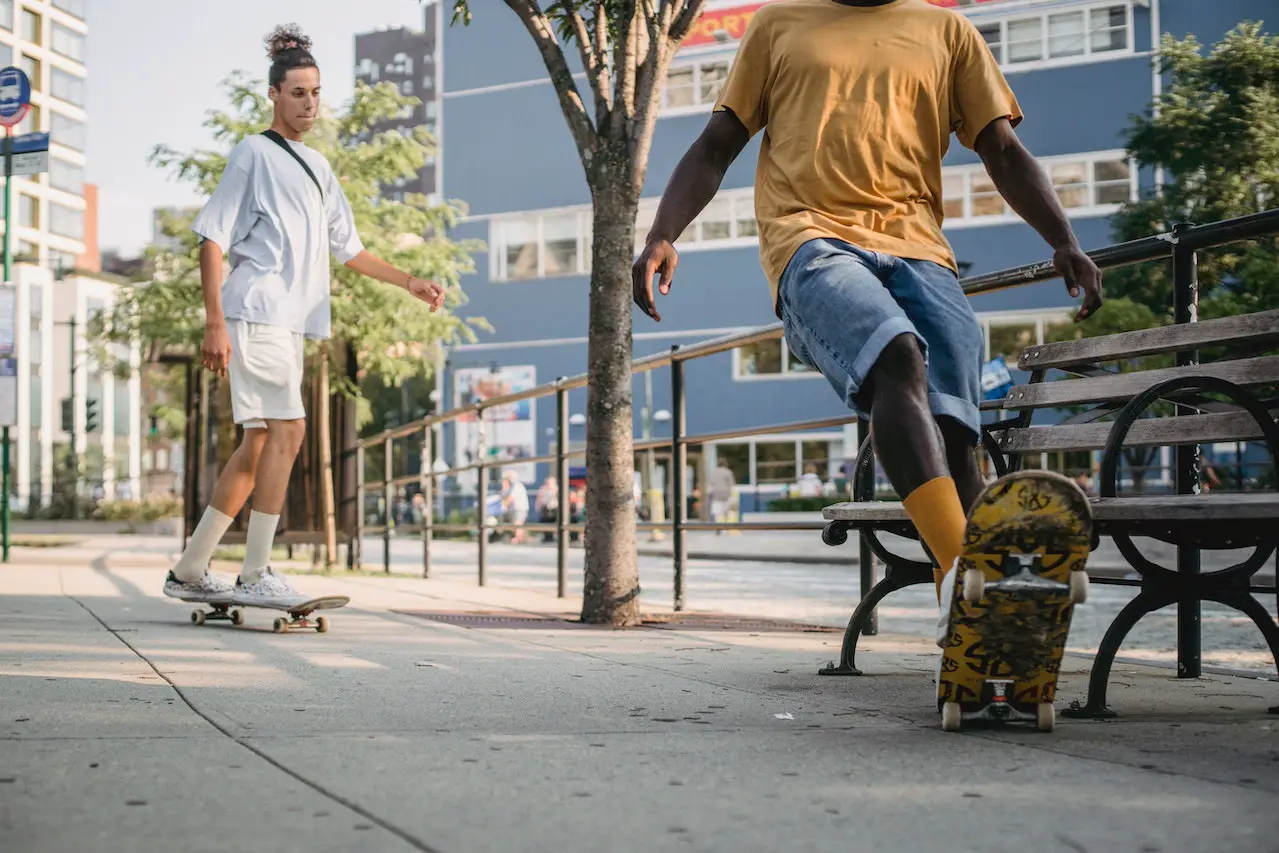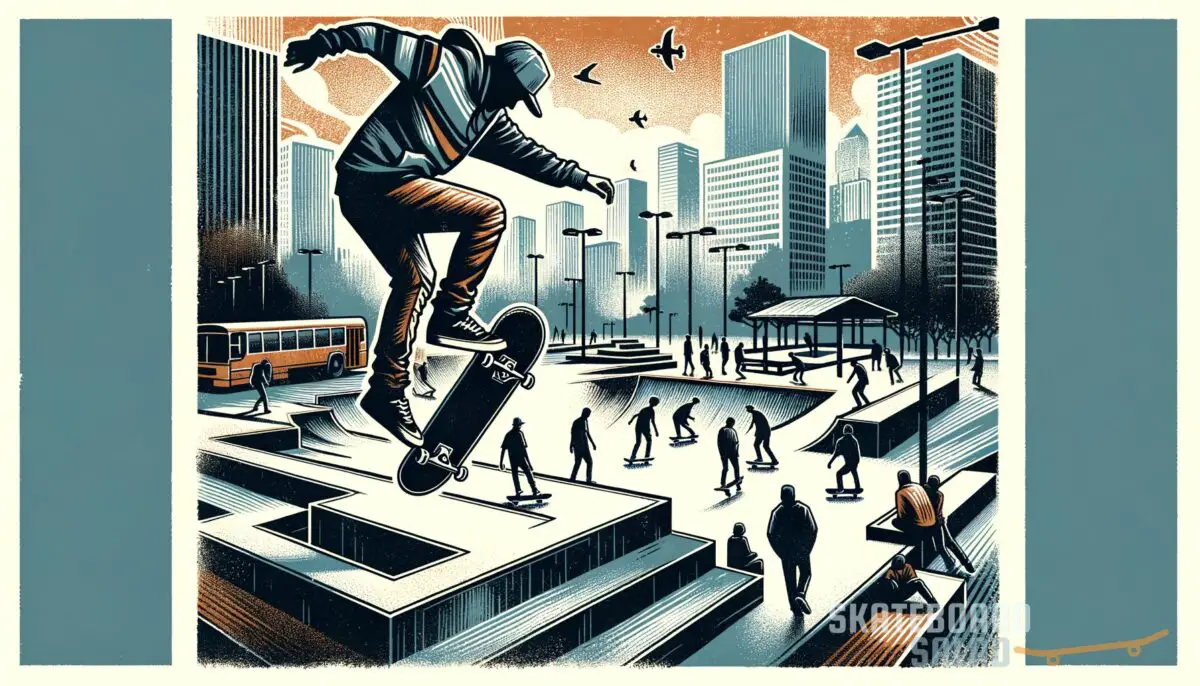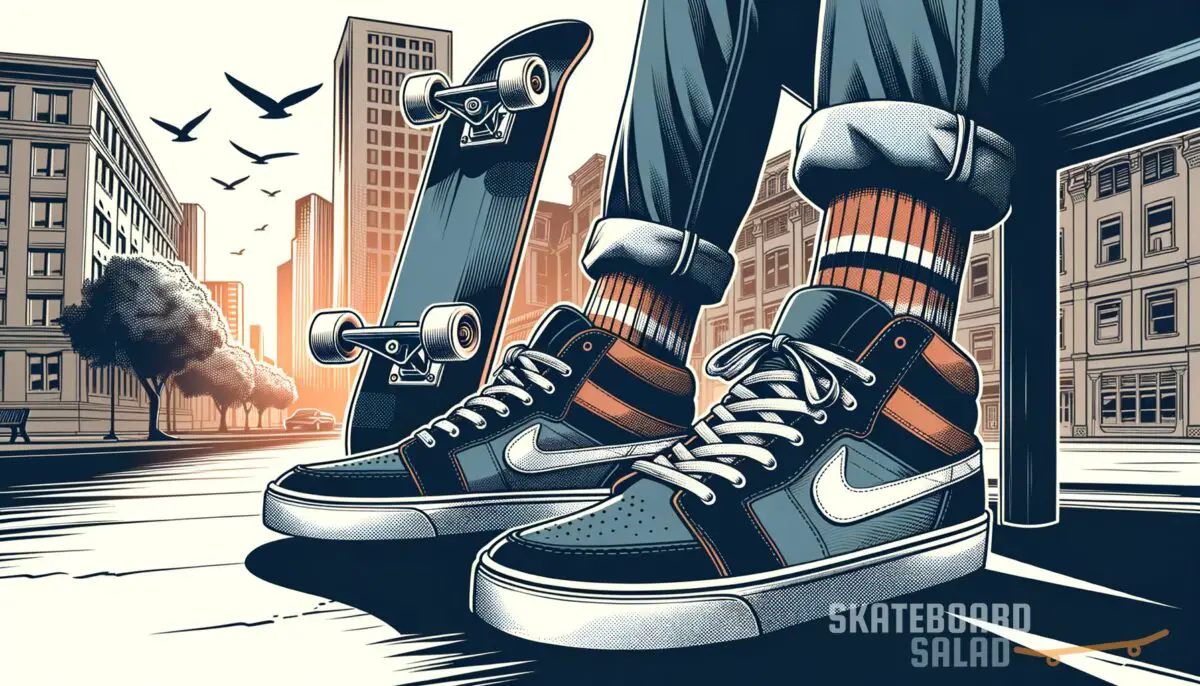Some of you might wonder, “What does skateboarding have to do with commuting?” Well, my friends, that’s exactly what we’re going to talk about today. Let me tell you, commuting can be a real grind (pun intended). But are skateboards good for commuting?
This article covers the advantages and limitations of using a skateboard for commuting, real-world examples, and how to choose the right skateboard and stay safe while commuting. So, whether you’re a seasoned skateboarder or a newbie, this article is for you.
Are skateboards good for commuting? Yes, skateboards can be good for commuting, as they are lightweight, easy to carry, and require minimal maintenance. But they are only good for short distances or in good weather.
Advantages of commuting on a skateboard
Using a skateboard for commuting has several advantages, which include:

1. Lightweight and easy to carry
One of the best things about using a skateboard to commute is that it is light and easy to carry, so it can be taken on public transportation or stored in a locker or backpack. This makes them convenient for those traveling to work, school, or other destinations.
2. Minimal maintenance required
Another benefit of using a skateboard for transportation is that they require little maintenance. Unlike cars, bikes, and other modes of transportation, skateboards do not need to be refueled or serviced regularly. This can save the person time and money, making it a good choice for people who are short on time or don’t want to deal with the hassle of maintaining a bigger vehicle.
3. Unique and fun way to get around
Using a skateboard for commuting can also provide a unique and fun way to travel. You’ll appreciate the outdoors, stay active and healthy, and make commuting more enjoyable.
Enjoi Whitey Panda Complete Skateboard

Enjoi Whitey Panda Complete Skateboard
Disadvantages of commuting on a skateboard
Skateboarding can be a fun and efficient way to get around, but it has some limitations when commuting.
1. Best for short distances
A skateboard is only suitable for a short distance. The average skateboarder’s range is 1-3 miles, depending on your skill level, terrain, and backpack weight. If you’re traveling a significant distance, you will likely need to take multiple modes of transportation.
2. Dependent on the weather
Skateboarding is advisable only for sunny weather. Wet or slippery surfaces can make it difficult to maintain control, and heavy rain or snow can make it dangerous to ride.
What to consider before commuting on a skateboard
If you’re still unsure whether riding your skateboard to work or school is the right move, ask yourself the following questions:
1. How comfortable are you on a skateboard?
Skateboard commuting is only ideal if you’re confident standing, pushing, turning, and stopping on a skateboard. The last thing you want before heading to your destination is to fall because you are swaying and unable to stop. Ultimately, you need to be sure you can maintain your balance and maneuver around obstacles without stumbling.
2. Is your route flat, uphill, or downhill?
The idea of commuting with your skateboard can be fun until you start pushing your skateboard uphill. Consider getting a skateboard if you live in a relatively level area or have mild inclines on your commute. What’s important is that you can make it up the hill without losing your cool and start skating down with a grin.
3. How rough are the roads and sidewalks will you commute on?
When you switch to skateboarding as your primary mode of transportation, you’ll quickly realize that not all cement is created equal. You should think about the wheels you want to ride if the roads you intend to skate on are very bumpy, gravelly, or have sidewalks with deep cracks.
Skating is still possible despite the hard concrete. To lessen the impact of vibrations, you could switch to softer wheels.
4. Do you have a skateboard, penny board, or longboard?
People often use “skateboard” to refer to any board with four wheels, even though many distinct types exist. Skateboards, penny boards, and longboards are the most popular boards for commuting.
Any board that is 32 inches long and has a symmetrical “popsicle” form may be considered a skateboard. Typically, these skateboards are used for stunts and street skating, but with the correct wheels, they may also serve as a reliable mode of transportation. This is the best deck to bring to the office since it is easy to carry, compact, and comfy to stand on.
Due to their length, beginner skaters will find it simpler to maintain their balance and have a more boat-like experience on longboards.
The typical skateboard is 48 inches long, but a penny board is 22 inches long. It’s easy to transport and store, but extended rides might be unpleasant for those with adult-sized feet.
Finally, longboards, which may be anywhere from 33 inches to 59 inches in length, are among the most forgiving types of skateboards. Due to their length, beginner skaters will find it simpler to maintain their balance and have a more boat-like experience on longboards.
They could be better for making sharp turns, but they’ll do in a pinch. A longboard’s size is its sole potential drawback, especially if you switch between skating and using public transportation regularly.
5. What bylaws are in place for skateboarding on sidewalks?
Consider whether skateboarding is legal on public sidewalks and roads in your area. Skateboarding to work or school may be against the law in your city, so do some research first. Most individuals will disregard these regulations, but you shouldn’t be shocked if you get a ticket one day.
6. How many things do you need to carry?
Skateboarding requires a lot of energy and movement for the rider. Your arms and legs will be restricted if you need to carry heavy items. It will be difficult to push off, bend your legs, and move your arms freely.
Also, you shouldn’t go skateboarding if you have a lot of stuff that won’t fit in a skateboarder’s bag. Carrying a heavy weight may cause your legs to tire more quickly. I’d recommend not bringing more than 25 pounds with you, but if you need to carry something heavier, consider riding a bike.

7. How often does it rain where you live?
Skateboarding in the rain is not a good idea. The reason for this is that water significantly shortens the lifetime of a skateboard. Your bearings are especially susceptible to water damage, and if left out for too long, they may rust and get stuck. And if water gets below your deck, it dilutes the adhesive and creates cracks and warping.
8. How far of a commute will you have?
The distance involved should be considered, even if the roads are great, the terrain is level the whole time, and the weather is always pleasant. As a rule, you should only use your skateboard for transportation if your daily commute is less than 4 miles. Getting beyond this point becomes tiresome and takes much more time than you would have anticipated.
What’s the best skateboard for commuting?
Skateboarding is more than simply hitting ramps and bowls with a bunch of ollies and kickflips! In fact, it has a lot of potential as a practical mode of transportation. Because there are so many different kinds of skateboards, finding the right one for your daily commute might take time. So, here are some of the best skateboards for commuting.
1. Popsicle skateboards for commuting
Popsicle skateboards are the most popular type of skateboard. Their greatest strength is that these can be used for various purposes. Due to its symmetrical design (mimicking a popsicle stick), it can perform tricks by popping the nose or tail.
Numerous companies produce popsicle boards, and some even sell them as complete skateboards. If you reside in the downtown area, you can easily take your popsicle board with you on public transportation and use it to travel across the whole city without needing a vehicle.
2. Longboards for commuting
Longboards have the potential to be far faster than traditional skateboards. In addition, you may ride with greater confidence and comfort on your daily commute thanks to the bigger trucks and wheels on most longboards.
Longboards come in various forms, from surfboard-inspired pintails to compact kicktail designs and even drop-thru boards that show off the wheels from above. In addition, longboards are made from various materials. Some are more suited to certain uses than others, such as flexible bamboo boards for carving and rigid maple boards for blazing speed.
A longboard is the best weapon for folks who wish to do nothing but cruise around…
Virtually every kind of longboard is fine for cruising about town. With these skateboards, you can easily glide over pavement cracks and other road irregularities since the wheels are softer and bigger than a traditional skateboard. What’s more, you’ll go significantly farther with each push.
A longboard is the best weapon for folks who wish to do nothing but cruise around large suburban regions or college campuses.
3. Cruiser skateboards for commuting
Cruisers are ideal for getting around town. These boards are designed with cruising in mind, as their name implies. Those who want the best of both worlds can’t go wrong with a complete cruiser.
Cruiser skateboards are about the same length as popsicle skateboards, but the trucks are wider and the wheels are bigger and softer to make cruising easy. In addition, cruisers often have a kicktail, which allows you to pop the tail for basic tricks and lean or pivot on the tail for turning.
If you want to skate to work, a cruiser skateboard is the way to go. It doesn’t matter whether you’re a novice or an expert, a kid or an adult; cruiser skateboards are among the greatest and most adaptable ways to move around town on wheels.
4. Old-school skateboards (shaped boards) for commuting
Classic decks come in various shapes that can be both beautiful and useful. In addition, you may buy decks with retro forms from renowned companies like Powell-Peralta and Santa Cruz, inspired by professional skateboards from the 1980s.
Old-school skateboards are great for cruising and getting about town, regardless of whether you’re looking for a retro board out of nostalgia or fashion. These boards, like cruisers, are great for riders of all experience levels.
5. Surfskates for commuting
A subset of skateboards known as “surfskates” recently gained popularity. These boards have special trucks built into them that make them glide and turn like a surfboard on the water. You should consider getting one to speed up your commute around town.
Skateboarding will have a new meaning once you try cruising or commuting on surf skates. If you’re a skater or surfer who wants to replicate the experience of surfing on concrete, surfskates are a great option. Although it’s not the same as surfing, riding waves on banks is a close second.
If you want even more tips and insights, watch this video called “How to choose the best longboard for commuting” from the Riding Boards YouTube channel.
Frequently asked questions (FAQ)
Do you still have questions? Below are some of the most commonly asked questions about commuting on a skateboard.
What kind of skateboard is best for commuting?
There are a few different types of skateboards, but cruisers are ideal for getting about town. These boards are designed with cruising in mind, as their name implies. Those who want the best of both worlds can go right with a complete cruiser from a company like Landyacthz or Santa Cruz Skateboards.
Is skateboarding good for transportation?
Now more than ever, skateboards are being used as a practical mode of transportation. The prevalence of skateboards, cruiser boards, and longboards as modes of transportation is obvious. It’s a lot quicker than walking and better for your health.
How fast can you commute on a skateboard?
Using a skateboard for short distances can make your commute more efficient. Studies at UC Davis showed that skateboarders often go between 6 and 13 miles per hour, with a mean speed of 9.7 miles per hour, making it evident that skateboarding is much quicker than walking.
Conclusion
What could be more fun than skateboarding to work or school? Commuting on a skateboard is a unique and convenient way to get around, but remember to choose the right board, wear protective gear, and obey traffic laws. So don’t be afraid to break away from the usual grind and ride on a skateboard; you’ll be rolling with style and saving time and money!
However, just as you can’t become an expert cyclist by reading a book, you can’t become a great skateboarder by reading articles alone. It’s time to take action! Go and put what you have learned into practice.
So, do you like commuting on a skateboard? And did I cover everything you wanted to know? Let me know in the comments section below (I read and reply to every comment). If you found this article helpful, share it with a friend, and check out my full blog for more tips and tricks on skateboarding. Thanks for reading, and never stop shredding.
Key takeaways
This article covered the best skateboard for commuting, the advantages of commuting on a skateboard, and things to consider before commuting on a skateboard. Here are some key takeaways:
- Skateboarding is more than simply hitting ramps and bowls with ollies and kickflips.
- Skateboarding is a unique and fun way to commute to work or school.
- If your commute involves a lot of rough and uneven terrain and you don’t have soft wheels, taking your skateboard is not advisable.
- You can use your skateboard if your daily commute is less than 4 miles.
- Skateboarding on public sidewalks or roads may be against the law in your city, so do some research first.
- Popsicle skateboards, cruisers, longboards, old-school skateboards, and surfskates are some of the best skateboards for commuting.















